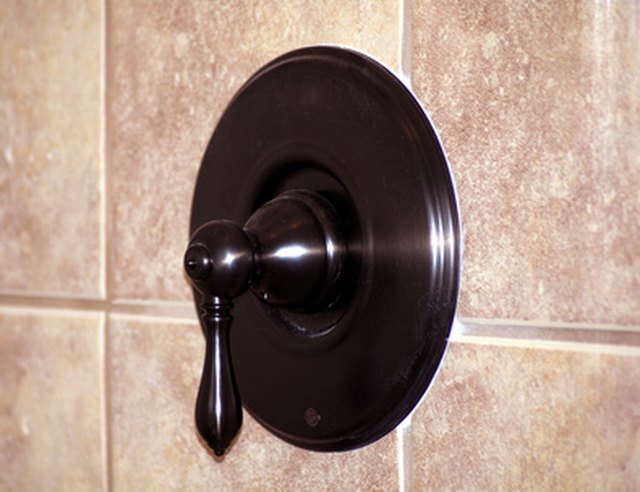

Moldy bathroom grout stains are a common bathroom problem, but they don’t have to be a permanent fixture! This comprehensive guide provides proven methods to efficiently remove moldy bathroom grout stains and restore a clean, beautiful bathroom. We’ll cover everything from identifying the cause of the mold to effective cleaning solutions, along with practical prevention strategies. This article will show you how to tackle tough stains with a variety of techniques, ensuring a sparkling bathroom that you’ll love again.
Understanding the Problem: Why Grout Gets Moldy
Identifying the Root Cause
Mold thrives in damp and humid environments, and grout, with its porous nature, provides an ideal breeding ground. Excess water, inadequate ventilation, and poor sealing around the tiles can contribute to the growth of mold and mildew. It’s important to identify the root cause to prevent future occurrences. Ignoring these issues can lead to more extensive damage, and potential health concerns.
Effective Cleaning Solutions for Moldy Grout
Preparing Your Workspace
Before starting, gather your supplies: a cleaning solution, a scrub brush or grout brush, gloves, eye protection (especially important for harsh chemicals), and a clean cloth or sponge. Protect your floor to avoid unnecessary mess by placing newspaper or old towels on the floor. Proper safety precautions help prevent further complications.
Removing Mold with Baking Soda and Vinegar
Baking Soda as a Scrub
Baking soda’s abrasive qualities and its ability to absorb moisture make it excellent for removing mold. Mix baking soda with warm water to create a paste. Apply the paste to the affected grout lines and scrub gently with a brush or toothbrush. A more abrasive method is to use a grout brush designed for tackling stains, and scrub thoroughly. Allow it to sit for at least 15 minutes to allow the baking soda to work its magic, then rinse thoroughly and clean up the mess to avoid more issues in the future.
Using Bleach and Other Commercial Cleaners
Careful Application of Bleach
Bleach is a potent cleaning agent, capable of effectively removing mold. For safety reasons, combine bleach with water in a ratio of about 1:10. Apply this diluted mixture carefully using a clean brush, and keep the space well-ventilated. Always ensure you’re using bleach in a controlled environment. This technique can be effective, but always prioritize safety precautions.
Preventing Future Mold Growth
Maintaining a Clean Bathroom
Preventative measures are key to maintaining a mold-free bathroom. Regular cleaning and maintenance will help to prevent the growth of mold in the first place. Ensure adequate ventilation in your bathroom; good ventilation will help control moisture levels. Check for any leaks or water damage around the grout lines and address them promptly. If you have an older bathroom with poor sealing, consider sealing grout joints to minimize moisture absorption.
Using Specialized Cleaning Products
Choosing the Right Cleaner
Specialized grout cleaners are often designed to effectively tackle stubborn stains and mold. Some cleaners contain powerful chemicals, and these are sometimes necessary for tough cases. Carefully read the product instructions and follow the safety precautions. Always prioritize safety.
Using a Grout Brush
The Importance of the Right Tools
Using a grout brush designed for cleaning can be a crucial part of this process. This specialized tool is much more effective than a regular brush at reaching into grout lines and dislodging grime.
Using a Pressure Washer
Using a Pressure Washer for Extreme Cases
A high-pressure washer might be effective in removing stubborn mold or mildew in extreme cases. Be cautious, however, and exercise extreme care when using this tool.
Using a Steam Cleaner
How a Steam Cleaner Can Help
A steam cleaner can be a fantastic tool to target moldy grout. The high temperature and pressure of steam can effectively loosen and remove mold without the use of harsh chemicals or abrasive materials. Steam also kills mold, so it is quite effective for this task.
FAQs
Can I use other home remedies for cleaning moldy grout?
While baking soda and vinegar are common methods, other natural solutions might be effective for mold removal. However, stronger cleaning agents, such as bleach, may be necessary for tougher stains. Always consider the efficacy and safety precautions when applying the solutions. Always check the label to determine the correct dilution ratios for effective cleaning.
How often should I clean my bathroom grout to prevent mold growth?
Regular cleaning of bathroom grout is essential to prevent mold growth. A thorough cleaning every 2 weeks may be sufficient to keep mold at bay if you have adequate ventilation and moisture control. Increased frequency may be required if you have high-moisture environments in the bathroom.
In conclusion, removing moldy bathroom grout stains requires a meticulous approach, combining the right tools and techniques. By following the steps outlined in this guide, you can tackle those unsightly stains and restore your bathroom’s pristine appearance. Remember prevention is key; regular maintenance can significantly reduce the likelihood of future issues. For more cleaning tips and advice, visit our website at [website address].